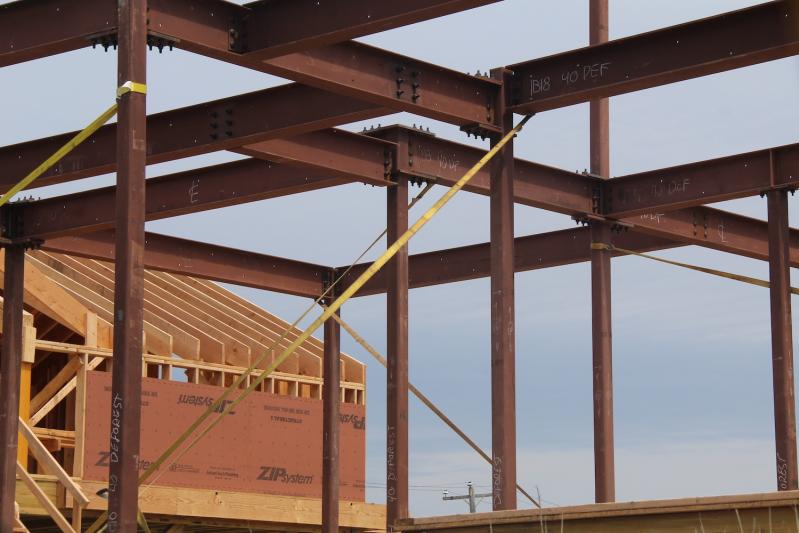The East Hampton Town Board, after debating the merits of a handful of formulas to rein in house size, settled on a compromise to take to the public in a hearing on March 6: capping houses’ gross floor area to 7 percent of their lot area plus 1,500 square feet.
The current formula is 10 percent of a lot area plus 1,600 square feet.
Following the passage of a suite of zoning changes on Dec. 5, the board began deliberating over the gross floor area formula, which is one element of the town’s “dimensional table.” The dimensional table defines not only maximum house size, but also minimum setbacks, maximum building and lot coverage ratios, and height limitations.
Months of data and charts and talk of neighborhood characteristics and how best to protect small building lots led to two divergent camps. On one side was the zoning code amendment working group, comprising Councilwoman Cate Rogers, two members of the zoning board of appeals and a past chairman, and other town officials, which has pushed for the formula to be set at 7 percent and 1,300 square feet. On the other was a loosely defined industry group, a mixture of architects, real estate agents, and builders who think that goes too far.
At the town board’s Feb. 4 work session, Jaine Mehring, a member of the zoning code amendment working group, called into a town board meeting dominated by immigration talk and once again urged the board to consider tightening the standard.
“It’s important to reiterate that the formula recommendation from this zoning code amendment working group came to you and was derived from more than a year and a half of data analysis, assessment of conditions, consideration of alternatives, and the vetting of potential negative or unintended consequences,” she said. “The specific formula recommendation was found to be equitable across all lot sizes and will bring meaningful change and benefits the land and the community.”
She lamented an earlier board discussion on the matter, when numbers up to 1,800 square feet were considered by the board.
“Tweaking on the fly dilutes, and in a sense delegitimizes, a disciplined non-arbitrary process of the working group. For every upward tweak you will accomplish less.”
Christopher DiSunno, a Sag Harbor-based architect who has spoken at past town board meetings for the industry group, sees it differently.
“There are important elements in the code that need to be addressed and G.F.A., in my opinion, is lower on the list in terms of how to resolve real problems,” he wrote in an email. “What I wish we could do is write a code about massing and volume; however, that is far more complicated than reaching for G.F.A. and saying, ‘Problem solved.’ I would love to see the town board adopt the 8 percent plus 1,600 change as a logical sequential step from the 2017 change, and engage us local professionals who deeply love our community and have offered our help to develop a code that can reach a defined goal.”
“The unfortunate part of this entire discussion is that regardless of however small the G.F.A. code becomes, new houses or renovations can still appear large based on design, not on area,” he wrote.
Rob Connelly, the town attorney, confirmed in a phone call Monday that even though the formula has been noticed at 7 percent and 1,500 square feet, it’s possible the final legislation passed can differ from those numbers.
“It would depend on whether the change was viewed as substantive by the board,” he said. “But as long as it’s heard, and the reasons why they wanted to change the numbers were expressed, they could adopt different numbers than those on the hearing notice.”
The hearing on March 6 will begin at 6 p.m.




